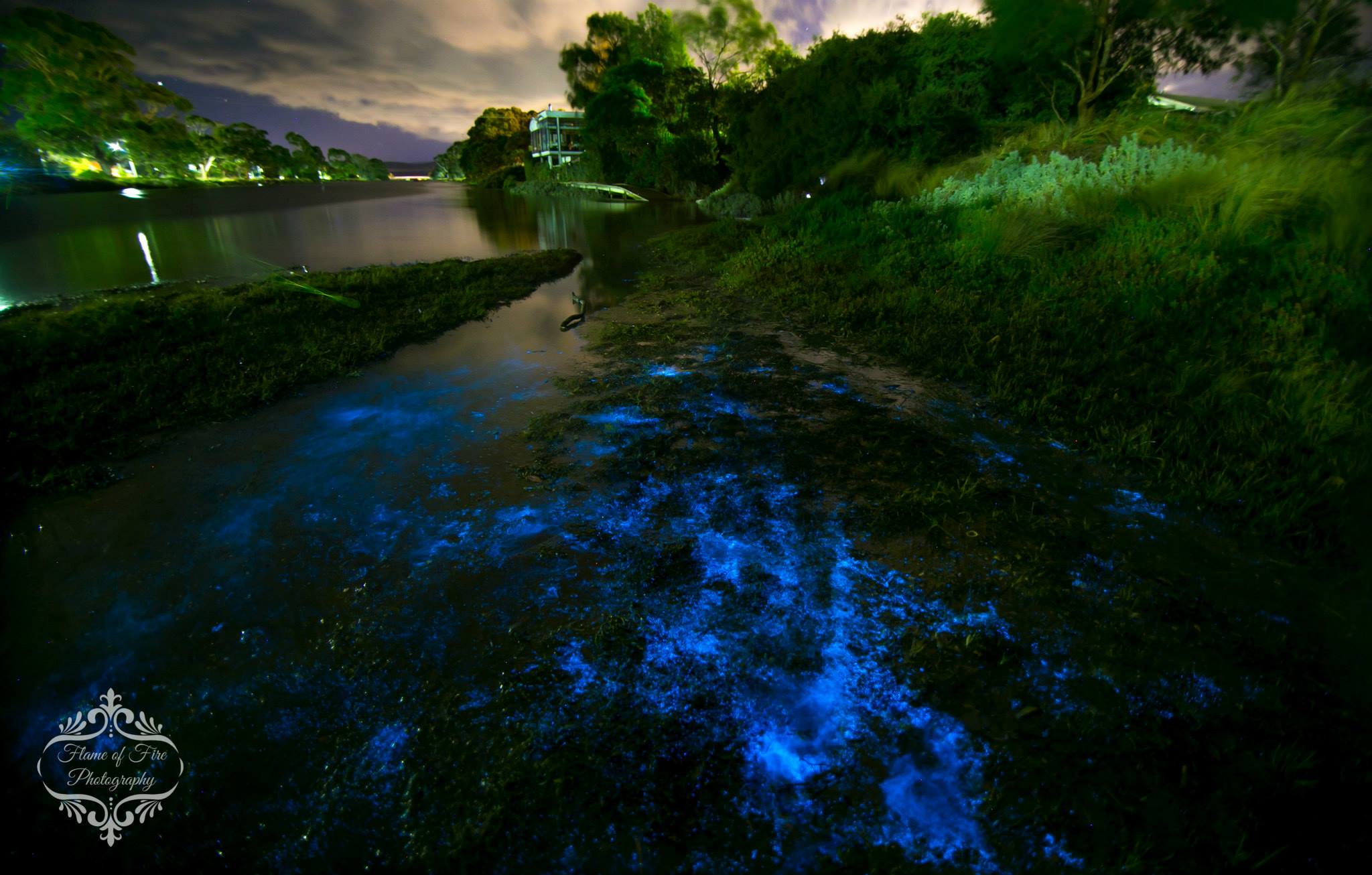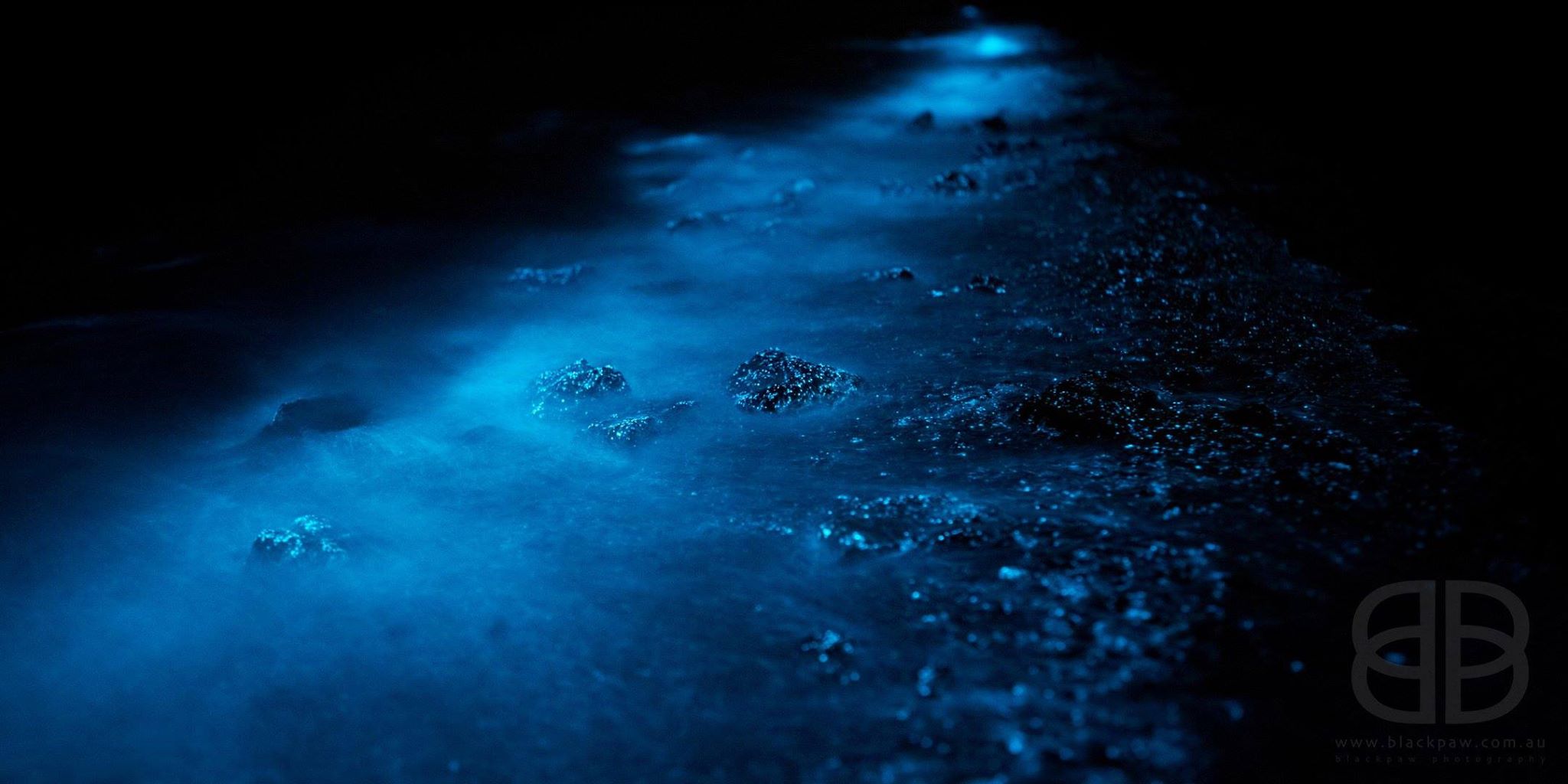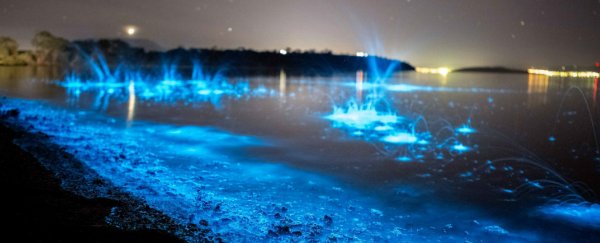Incredible pictures of bioluminescent plankton blooming Tasmania's Derwent River have become a global sensation this week. The tiny glowing critters are still lighting up the water in brilliant blues. Local photographers are sharing their pictures at Bioluminescence Tasmania's Facebook page and watching their work go viral online as the world's media snap it up.
Photographer Jo Malcomson told Business Insider yesterday: "It's like a chemical spill!" The sad reality is, she wasn't too far off the mark.
The biology is a little bit more complicated when you drill down into it, but this particular invasion is being carried out by dinoflagellates Noctiluca scintillans, also known as Sea Sparkles.
They are phytoplankton, the plant variety of plankton, as opposed to zooplankton, the type we associate with what whales eat.
This type of dinoflagellate is unusual in that it feeds on other plankton, according to Lisa Gershwin, author of Stung! On Jellyfish Blooms and the Future of the Ocean. "As creatures go, it's more of the unwanted kind. In extreme cases it can cause fish kills; it does it all over the world."
The concern is, "all over the world" never included Tasmania until 1994, when the phytoplankton were first spotted that far south. By 2004, sightings were much more common.
"The displays are a sign of climate change," Anthony Richardson, from the CSIRO, told New Scientist earlier this week.
 Rovsen Giffard, Flame of Fire Photography
Rovsen Giffard, Flame of Fire Photography
Global warming has been strengthening the East Australian current, pushing warm water south towards Tasmania - "warm enough for Noctiluca to survive," Richardson says.
Peter Thompson is a senior principal research scientist for CSIRO Oceans & Atmosphere, based in Tasmania. Somewhat ironically, he's missing this bloom because he's at the Harmful Phytoplankton Blooms and Climate Change conference this week in Sweden, run by the International Oceanographic Commission.
He confirmed Noctiluca had been blooming in the Derwent most years since 2004, pointing to a study which showed it had moved from Moreton Bay, 1700 km north in the past few decades.
"It does represent a large change to our ecosystem," he told Business Insider. "Previously it was rare or absent yet now it is the most abundant organism in the river that eats phytoplankton."
Not only do they knock plankton food stocks around, when they die, Noctiluca can turn harmful.
"When the cell breaks down, ammonia is released and the massive bloom could become a deadly cloud," Gershwin said. "It can change the flavour of the water and it's noxious to fish."
Depending on where the sea sparkles die, a kill of local fish stocks could follow in sheltered waters within days. In the open ocean, it's unlikely to show any effect.
 Jo Malcolmson/Blackpaw Photography
Jo Malcolmson/Blackpaw Photography
But as it stands, this particular bloom has been seen in the Derwent from Howrah, almost directly across the river from the Hobart CBD, 20 km south to Howden, and east to Eaglehawk Neck, roughly 40 km as the crow flies. Which is not exactly "open ocean".
"Even a small bloom on top of a fish farm could have an extreme effect," Gershwin said.
Aquaculture is a big earner for Tasmania, which produces more seafood by value than any other Australian state - up to $700 million a year, with farmed salmon alone accounting for more than $500 million of that.
There have already been some minor problems in 2002 with salmon pens off the Tasman Peninsula accumulating Noctiluca slicks on the surface.
That saw fish refusing to surface to feed and was eventually resolved by generating an air bubbling system with air bubbles coming up in the centre of the fish pens to clear the surface waters. Most Tasmanian fish farms have now such systems in place.
"If a dense patch gets caught in a fish pen then the ammonium can cause problems for the fish," Thompson said. "There have been fish kills associated with these sorts of blooms in the past."
Thompson said so far, researchers have "relatively little understanding of how this has affected other aspects of the ecology of the Derwent".
This article was originally published by Business Insider.
More from Business Insider:
